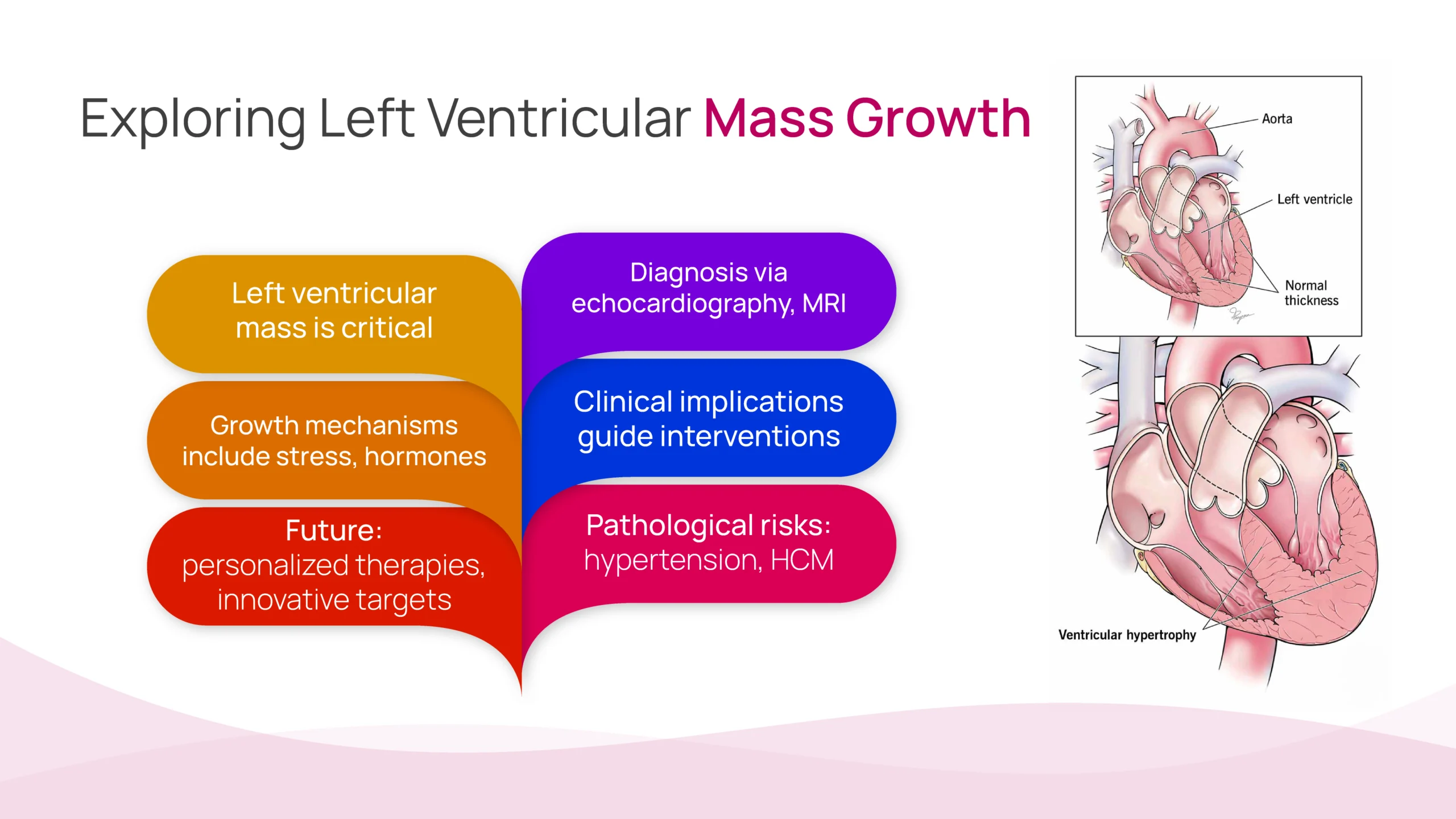
Author:- Mr. Ritesh Sharma
The chambers of the human heart contain a lot of important entities. One of these important entities is the left ventricular mass. It stands out as one of the most critical aspects of cardiovascular health. The left ventricular mass growth is essential to understand and learn about different facets of the human heart.
In this blog, we will discuss everything regarding left ventricular mass growth. This includes its definition, mechanisms, pathological significance, diagnostic techniques, and clinical implications. So, whether you are a clinician or a part of the general audience, you will find worthy information from this blog that will help you understand the human heart in a more comprehensive and elaborate manner.
Understanding Left Ventricular Mass
Before diving into the intricate topic of left ventricular mass growth, let’s try to understand the basics. The human heart comprises four chambers: two atria and two ventricles, i.e. left atrial, left ventricle, right atrial, and right ventricle. The left ventricle, in particular, plays an important role in pumping oxygen-rich blood to the entire body. Left ventricular mass refers to the thickness and volume of the muscle tissue in this chamber. Its growth is a natural response to various stimuli, including exercise, hypertension, and pathological conditions.
You must also know that ventricles are separated by the ventricular septum, which prevents the mixing of oxygenated and deoxygenated blood during the process of circulation. Furthermore, another important facts of the anatomy of the left ventricular mass is the presence of valves which are there to prevent the backflow of blood to the heart.
Mechanisms Driving Growth
The left ventricular mass growth is a complex process that is propelled by a barrage of molecular signals and physiological adaptations. At the forefront is mechanical stress. Increased blood pressure, as seen in hypertension, imposes a greater workload on the heart, prompting muscle cells (cardiomyocytes) to hypertrophy or increase in size. Additionally, hormonal factors such as insulin-like growth factor 1 (IGF-1) and angiotensin II play crucial roles in mediating cardiac growth pathways.
Exercise, often hailed as the elixir of cardiovascular health, also induces left ventricular mass growth. Endurance training, in particular, leads to eccentric hypertrophy, characterized by an enlargement of the ventricular chamber and increased muscle mass. This adaptive response enhances cardiac output and endurance, ensuring the heart can meet the demands of sustained physical activity.
Pathological Significance
While left ventricular mass growth can be adaptive in certain contexts, pathological hypertrophy poses grave risks. Chronic hypertension, for instance, can lead to maladaptive hypertrophy, where the heart muscle becomes stiff and less compliant. This condition, known as hypertensive heart disease, increases the risk of heart failure, arrhythmias, and sudden cardiac death.
Another condition associated with abnormal ventricular mass growth is hypertrophic cardiomyopathy (HCM). In HCM, genetic mutations cause excessive thickening of the ventricular walls, impairing cardiac function and increasing the risk of life-threatening arrhythmias. Understanding the molecular mechanisms underlying HCM is crucial for developing targeted therapies to mitigate its effects.
Diagnostic Techniques
Given its clinical significance, assessing left ventricular mass is paramount in cardiovascular medicine. Echocardiography, a non-invasive imaging technique, is commonly used to measure ventricular dimensions and wall thickness. Cardiac magnetic resonance imaging (MRI) provides even greater precision, allowing for accurate quantification of myocardial mass and volume.
Beyond structural measurements, advanced imaging techniques can assess myocardial fibrosis, a hallmark of pathological remodeling. Late gadolinium enhancement MRI, for instance, can detect areas of scar tissue within the myocardium, providing valuable insights into the progression of heart disease.
Clinical Implications of Left Ventricular Mass Growth
The assessment of left ventricular mass growth holds profound implications for patient care. In hypertensive individuals, monitoring changes in ventricular mass over time can guide therapeutic interventions aimed at lowering blood pressure and reducing cardiovascular risk. Similarly, in athletes, distinguishing between physiological and pathological hypertrophy is crucial for optimizing training regimens and minimizing the risk of adverse cardiac events.
Furthermore, emerging therapies targeting the molecular pathways involved in cardiac hypertrophy offer promising avenues for intervention. From inhibitors of the renin-angiotensin-aldosterone system to novel gene-editing techniques, researchers are exploring a plethora of strategies to modulate left ventricular mass growth and mitigate its pathological consequences.
Future Directions
As our understanding of left ventricular mass growth continues to evolve, so too do the opportunities for innovation. Advances in imaging technology, coupled with a deeper appreciation of the molecular mechanisms driving cardiac hypertrophy, hold promise for more personalized approaches to cardiovascular care. By integrating multi-modal imaging data with genetic and biochemical markers, clinicians can gain a more comprehensive understanding of individual patient’s cardiac health, enabling tailored interventions aimed at optimizing outcomes.
In parallel, ongoing research into novel therapeutic targets offers hope for the development of more effective treatments for conditions characterized by abnormal ventricular mass growth. Whether through targeted pharmacotherapy or innovative gene-based interventions, the quest to unlock the secrets of the heart’s enigma continues unabated, driven by a shared commitment to advancing cardiovascular health for all.
In conclusion, the left ventricular mass growth epitomizes the heart’s remarkable capacity for adaptation and resilience. From the rigors of exercise to the pressures of hypertension, the heart responds dynamically to its environment, undergoing structural changes to maintain optimal function. Yet, amidst this complexity lies a delicate balance, one that, when disrupted, can have profound implications for cardiovascular health. By unraveling the mechanisms driving left ventricular mass growth and harnessing this knowledge for clinical benefit, we move one step closer to understanding the heart’s enigma and safeguarding its vitality for generations to come.





